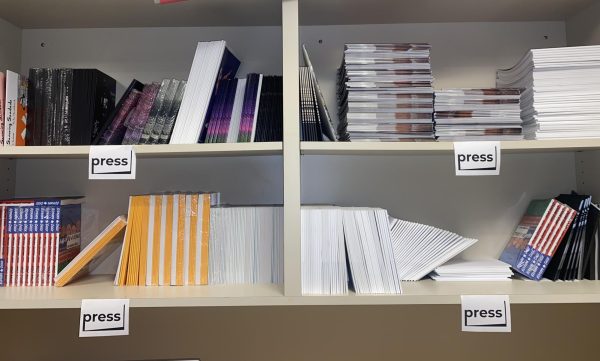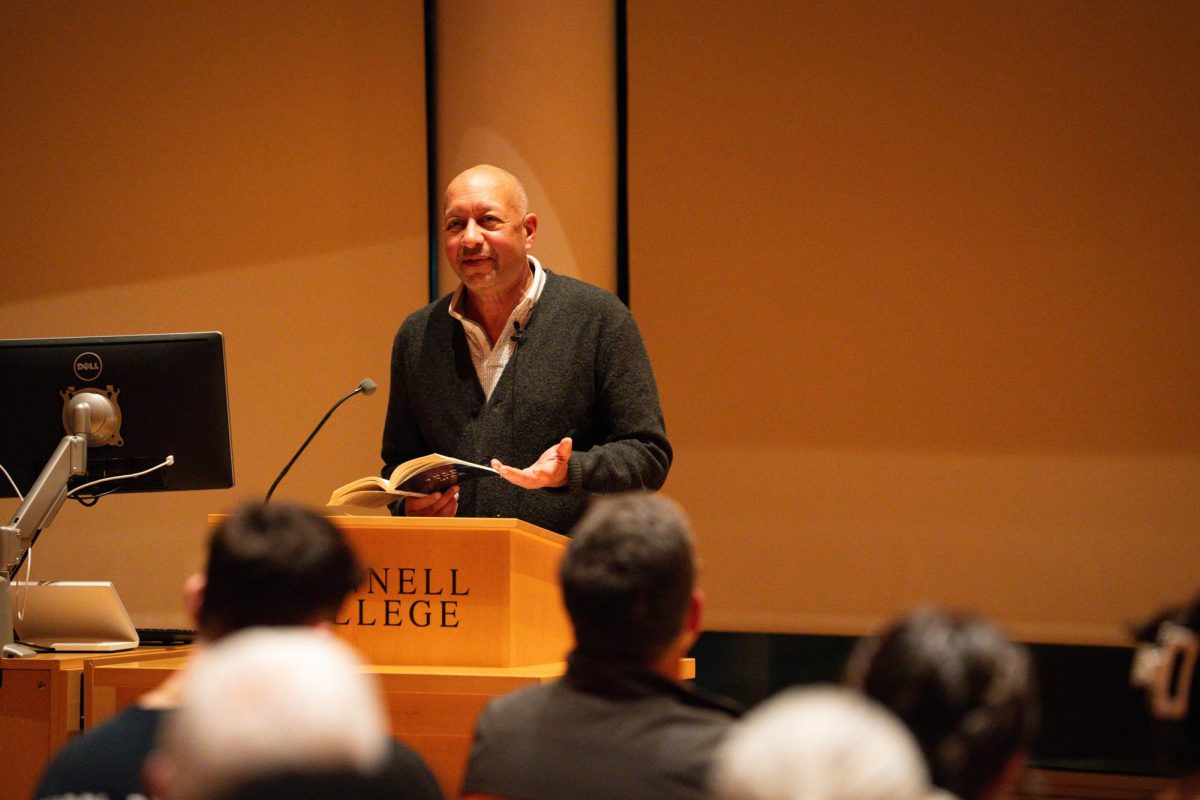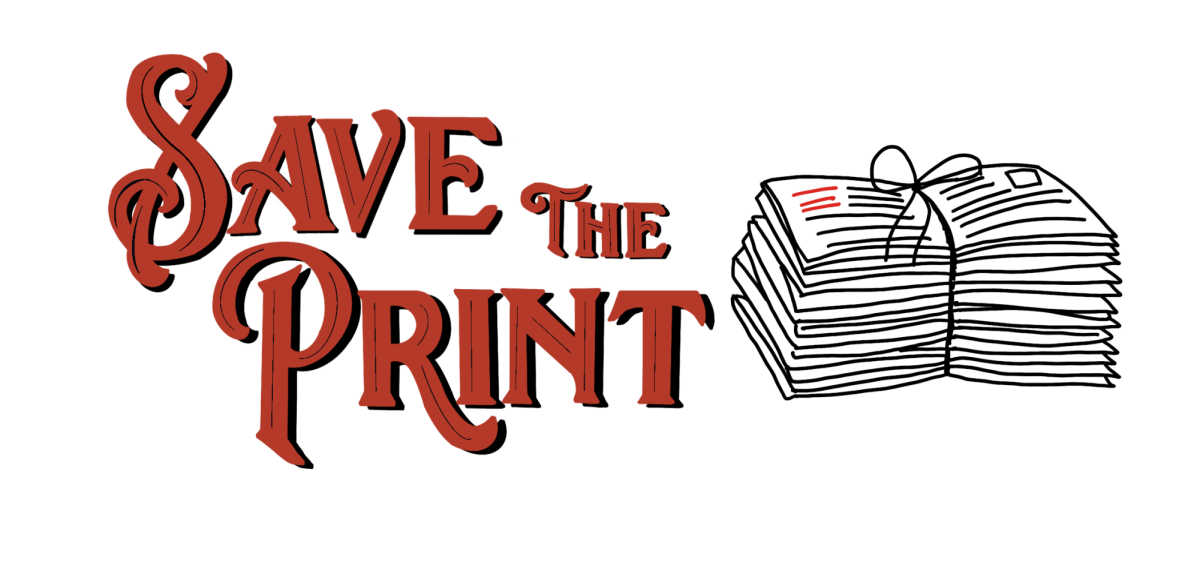For Ali Levine `24, receiving the first print editions of GOGUE, Grinnell’s recently established fashion magazine, was a magical experience. “Having a physical version of all the hard work that you do is so empowering and so meaningful — for people to see themselves and see people in an actual physical copy, it’s like something else altogether.”
Following the news of potential budget cuts effectively eliminating print editions for all campus publications starting next school year, The S&B spoke with several students who reflected on the meaning of physically publishing their work.
Levine has previously worked in public relations and outreach with GOGUE and helped design the visuals for their first publication in spring 2022. To Levine, GOGUE is about “uplifting voices, making people feel confident in themselves and providing a platform for them to be a little bit more out there.”
Having a physical version of all the hard work that you do is so empowering and so meaningful — for people to see themselves and see people in an actual physical copy, it’s like something else altogether.
— Ali Levine `24
Grace Gilday `25 has worked as a writer at GOGUE since her second year. Like Levine, she remembers celebrating the arrival of boxes full of magazines each semester. “Actually seeing this physical thing that I’m producing I think is always going to be more satisfying, especially emotionally because we put so much work in as a team, and it’s fun to see how it comes together,” Gilday said.
Currently, GOGUE exists solely as a print magazine and has no online presence. Both Levine and Gilday said they are unsure if GOGUE would be successful online.
Gilday said that printed magazines provide “connection with people that you’re not going to get online, showing your screen. The process of flipping through the pages together, and smelling the ink and seeing the color of the pictures just makes a huge difference.”
In previous semesters, Brenna Fertig `24 has published her poetry in Grinnell Underground Magazine (GUM). “There’s something about seeing something I’ve written in a printed form, on the glossy paper, that makes it real,” she said. “I can read my own poetry on my phone at any time but seeing it printed in a magazine is more special.”
Fertig said she was surprised to open GUM and see that the designers coupled her poem “Red” with another student’s drawing. “It paired together so well and made it even better,” she said.
Fertig said that at GUM, a more art-centered publication, the physical layout of the magazine is a priority. “There’s a lot of effort that goes into the layout and the artwork in the pages,” she said. “When I say ‘oh, I’m publishing something,’ I think about the physical aspects as well. I think that’s one of the things that always encouraged me to submit to [GUM] anyway.”
Like GOGUE, GUM does not have an online presence. Fertig said, “There’s something about the physicality of it [the magazine] that definitely makes it seem like more like a social activity, whereas if it’s just online, I feel like it’s so restricted.”
Emme Perencevich `25 served as co-editor-in-chief at Grinnell College Press last semester. She has also published a zine in GUM, worked as a copy editor at The S&B and will have art published in the upcoming edition of the Grinnell Review.

Perencevich explained that Press allows students to publish their art and writing in an individual cohesive book, making them unique to other campus publications. “While tabling or at our release party events, I’ve seen how positive the responses to these books can be,” Perencevich wrote in an email to The S&B. “Some books fly off the shelves within a semester, and even then I’ll have people asking me for more copies.”
While Press has an existing online presence, Perencevich said they primarily use their website to market publications rather than platform published works. “The point of Press,” wrote Perencevich, “is to print books. Any online substitution would diminish not only student relationships with the organization and the work it puts out, but the purpose of Press.”
Perencevich and Fertig both discussed the excitement from the campus community upon releasing the magazines. Often, publications host tabling events outside of the Dining Hall to distribute copies of their newly released print works.
“At the release parties, all my friends would huddle around the magazine,” said Fertig. “People are always flooding over to grab a copy because it’s so much fun.”
Perencevich wrote that when they table outside of the Dining Hall, “professors and dining services staff line up with students to pick up our printed editions.” For Perencevich, these events are “a way for Grinnellians, students, faculty and staff to come together in shared excitement about something they can hold and take home with them.”
For three years, Katie Paek `24 has been a media head for The Sequence, an art and comics magazine. She has also contributed to Grinnell College Press, where she published “This Clover Is My Clover, This Air My Air,” a collection of drawings, poetry and prose.
“I think it’s important for artists to have a tangible copy of your work,” said Paek.
Paek, who grew up in Korea, said that showing her family a physical copy of her work helped them understand her better. “For my mom especially, her language proficiency isn’t such that she’s going to engage in creative writing in English, but this copy, having it in her hands is a way of her understanding and connecting.”
For my mom especially, her language proficiency isn’t such that she’s going to engage in creative writing in English, but this copy, having it in her hands is a way of her understanding and connecting.
— Katie Paek `24
While The Sequence formerly paid student contributors, this year the Department of Student Affairs did not approve the publication’s requested budget, meaning they can no longer pay contributing writers and artists.
To entice student submissions, Paek said, “the one thing remaining was you could see your work printed out, but if we lose that, especially for a smaller, quote, unquote ‘indie publication’ like Sequence, I feel like we probably might not exist in a couple of years or next year.” The Sequence has platformed student art and writing since its conception in 2004.
All five students interviewed said that print editions help foster community at Grinnell. “We have physical publications because we want to create a physical campus community,” said Paek.
Levine said that the ability for students to print their work “is not an opportunity that people get many places. Not having that would be like stripping away something really unique to a college publication experience.”



















